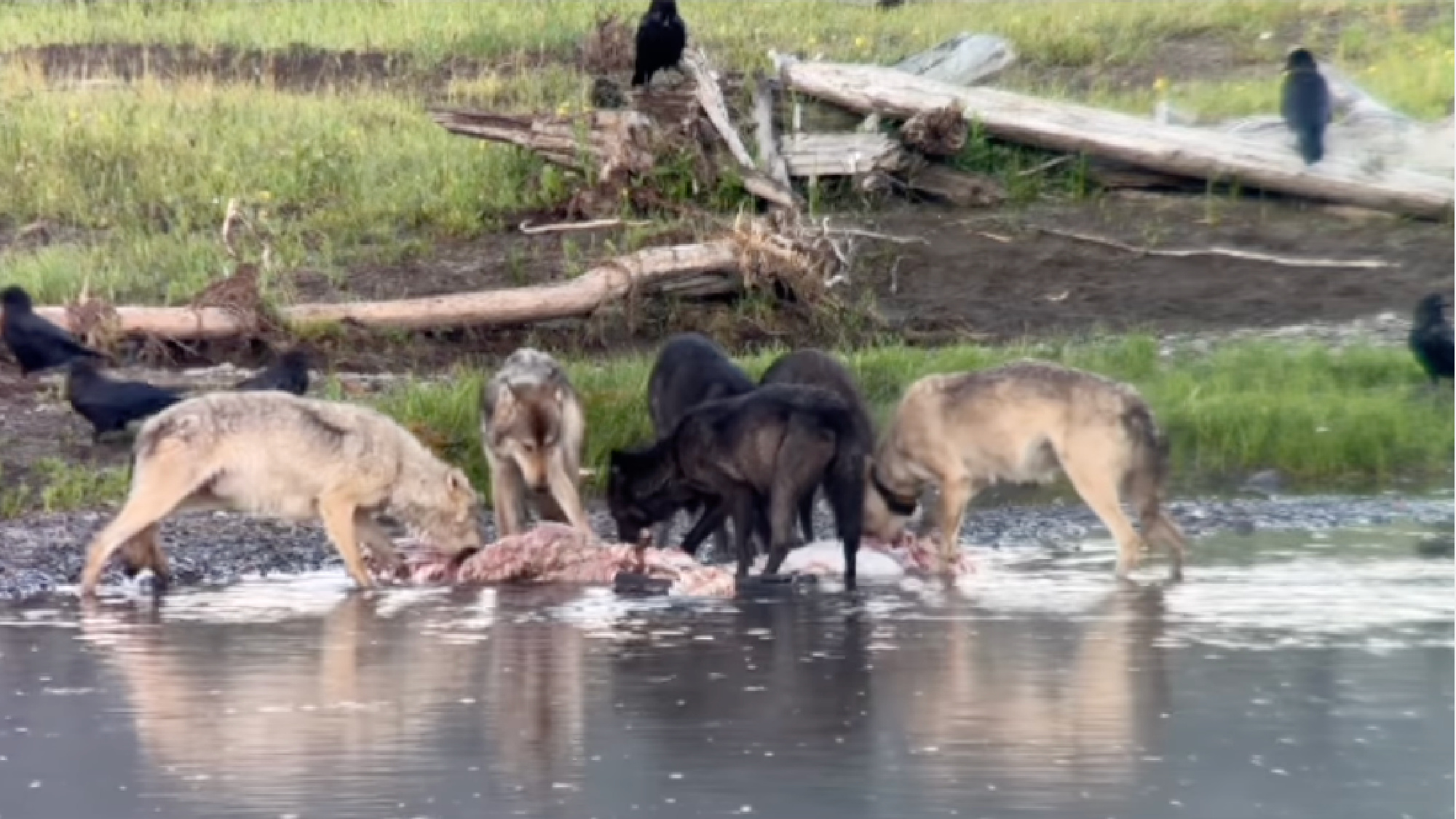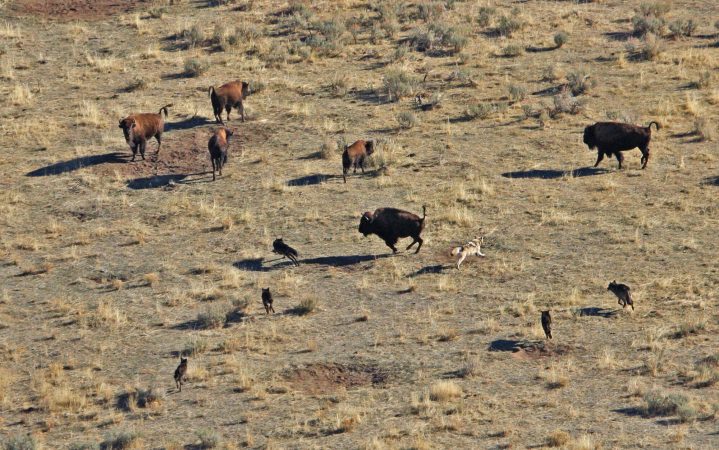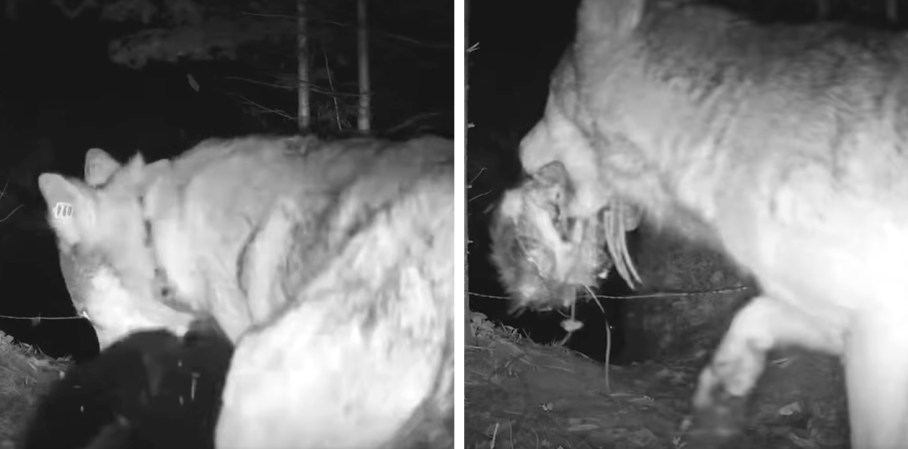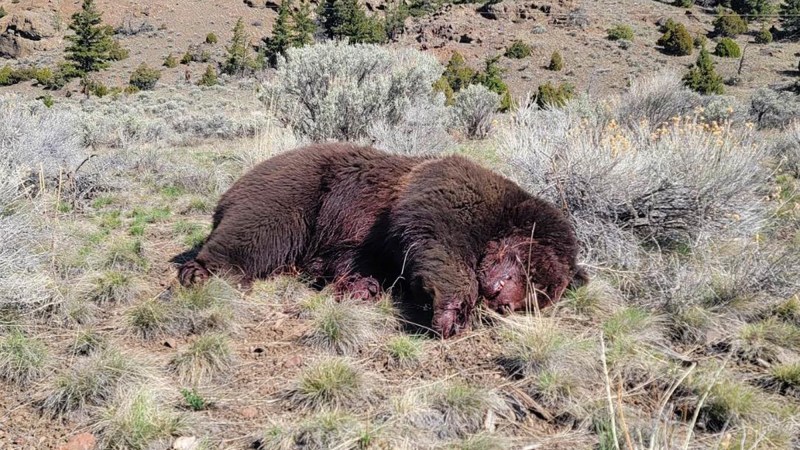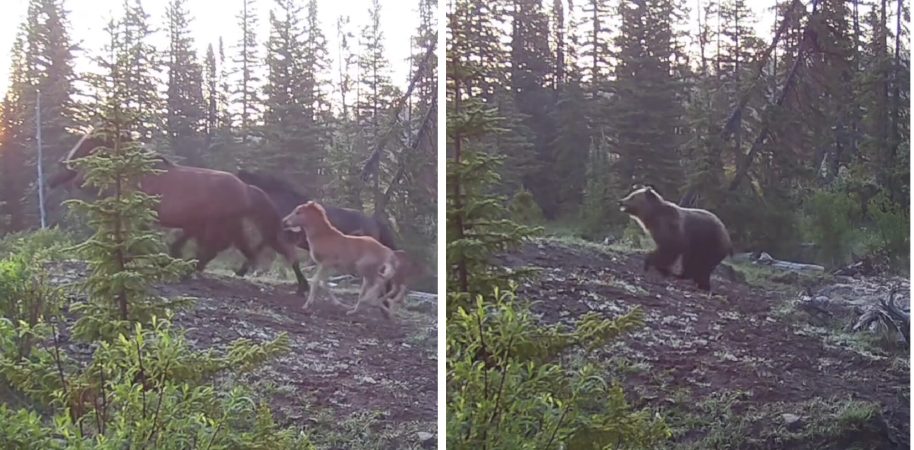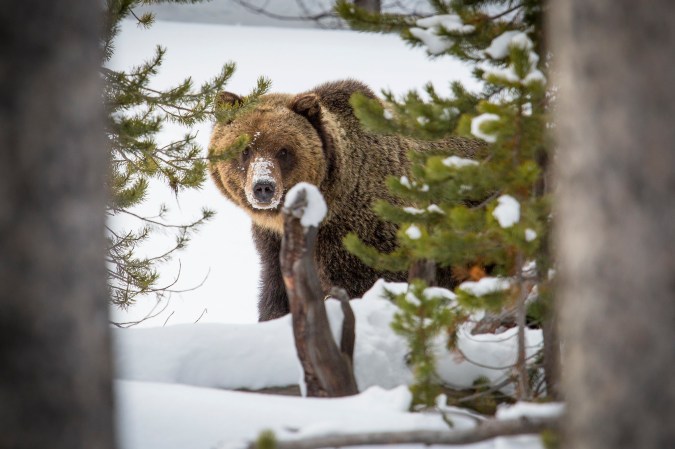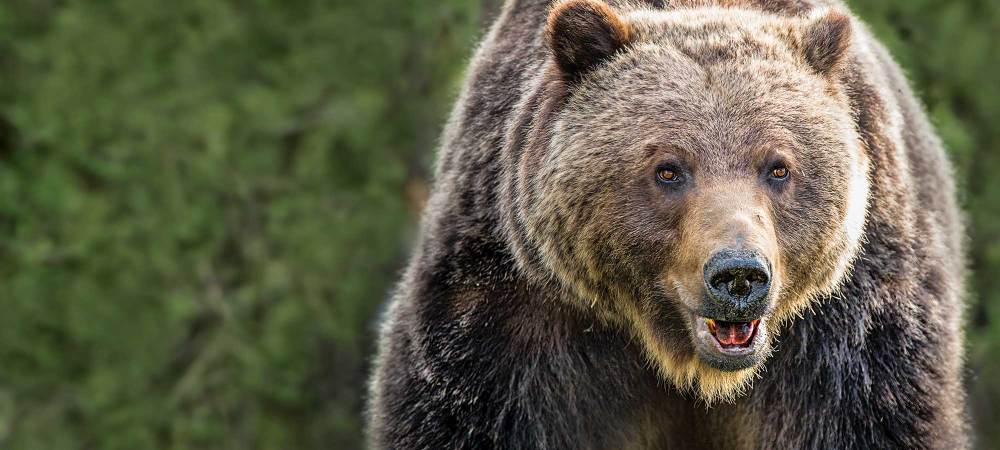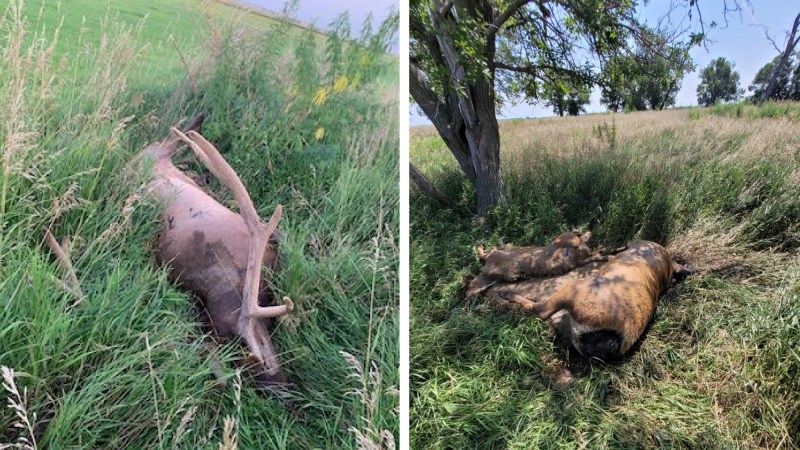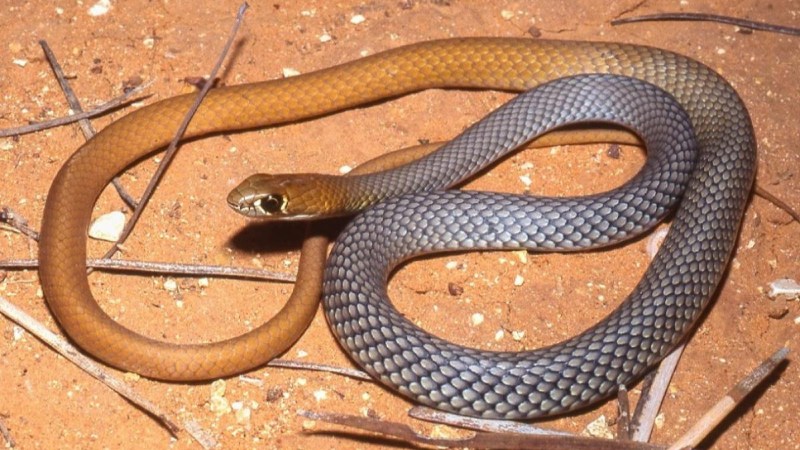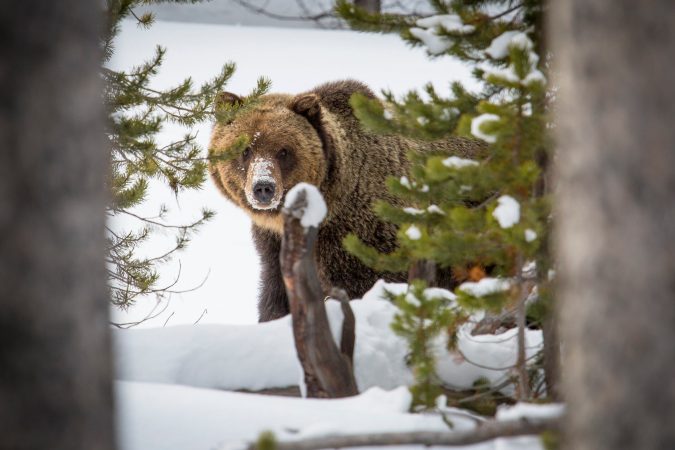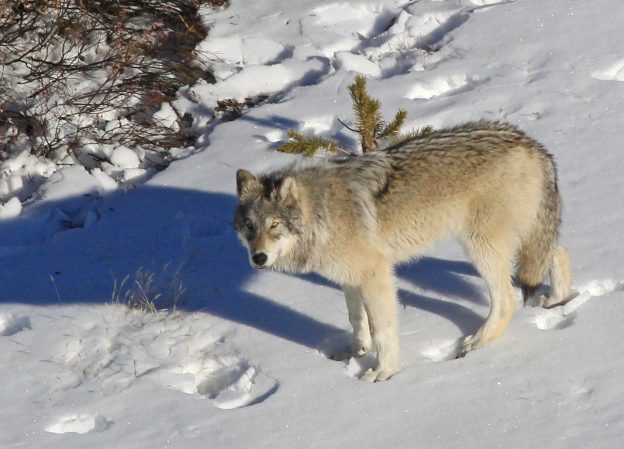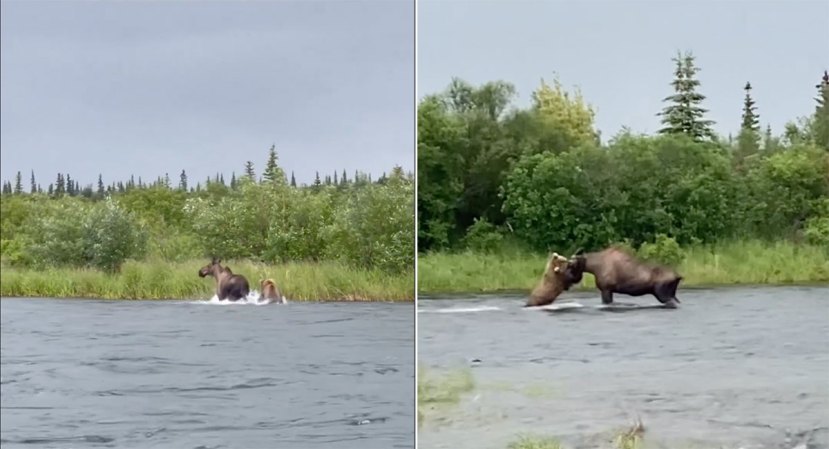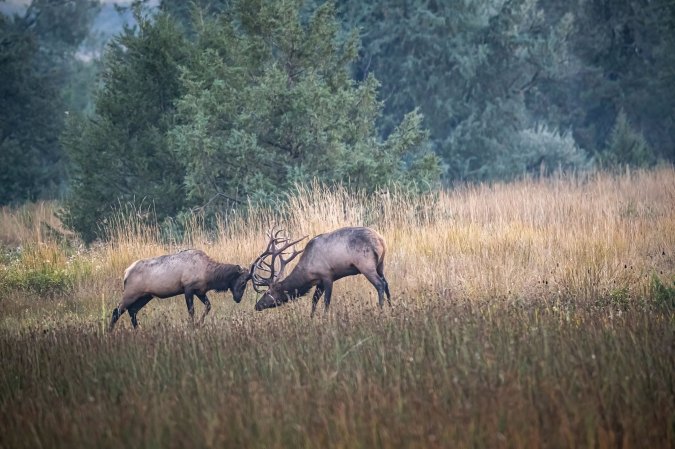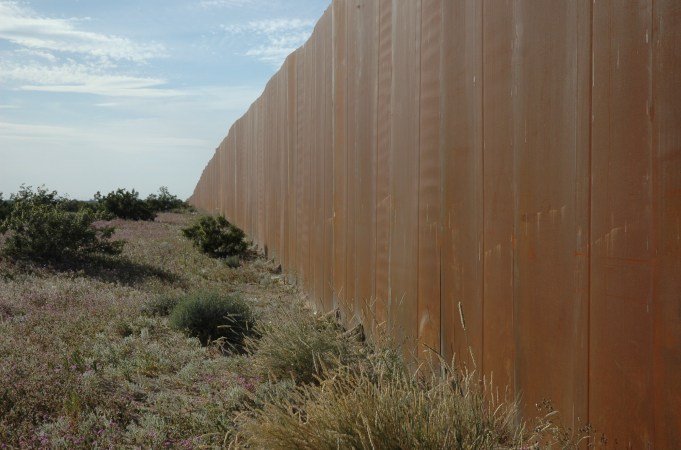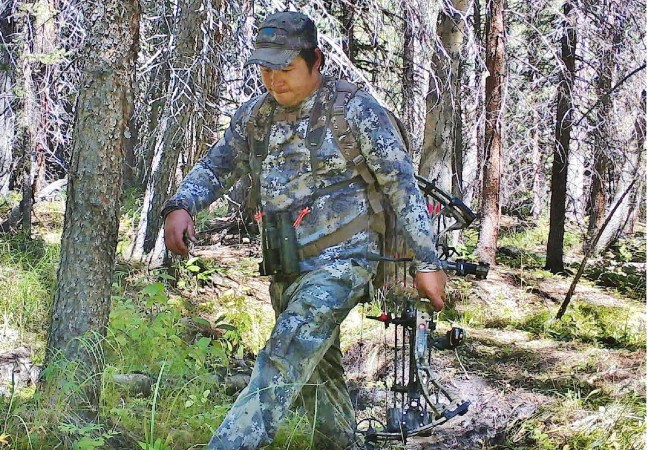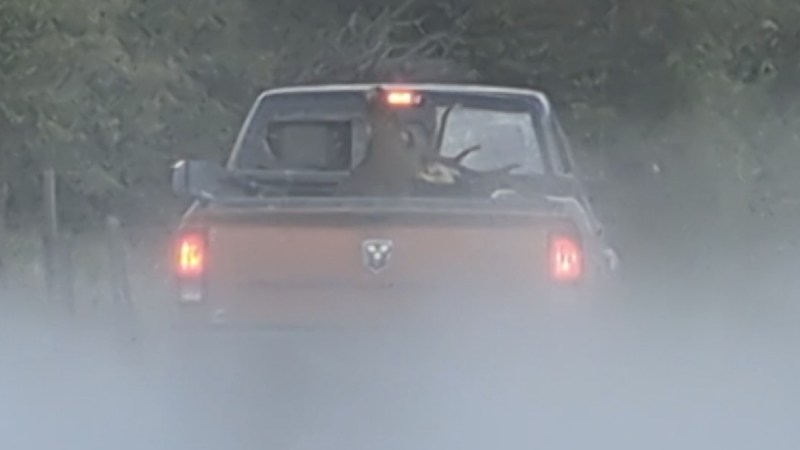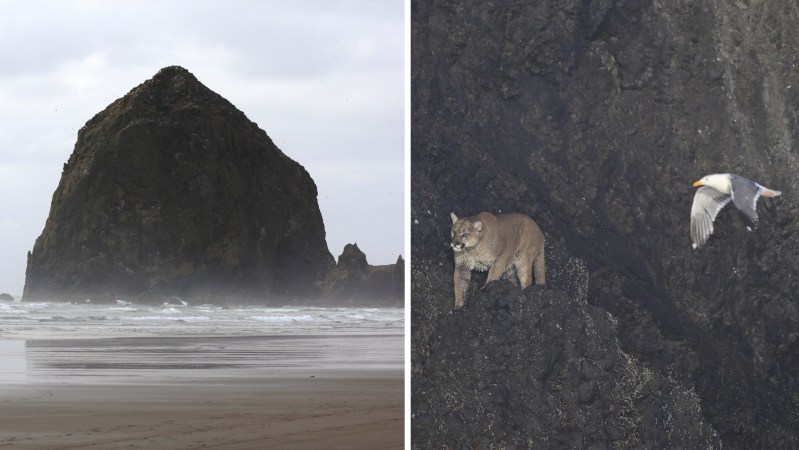Wolves and grizzly bears in Yellowstone have a way of putting on a good show for a camera. (But that’s no excuse for the people who attempt getting irresponsibly close to them.) On July 31, Yellowstone National Park wolf technician Taylor Rabe caught footage of a grizzly dragging a decaying elk carcass out of a river only to have the pack of Junction Butte wolves take it over as their own.
In the video, which Rabe posted to Instagram, the bear hauls the carcass by the rear end from the water and eventually dumps it on the riverbank. In the next frame, two wolves have emerged and are interested in the carcass, but the grizzly does its best to defend it. When the grizzly lowers its head and charges one of the wolves, a third wolf comes into the frame from the right side and bites into the carcass. It’s clear that the grizzly is outnumbered, and when it charges the third wolf, a fourth wolf emerges from the left side of the frame. The next shot shows the grizzly lumbering away from the carcass as six wolves descend on the meat.
In her caption, Rabe says that the participants in the morning’s feast actually numbered four grizzlies and 14 wolves throughout the morning, although the carcass’s proximity to people eventually drove away the predators.
Wolves vs. Grizzlies
The video provides confirmation of a well-established truth: Grizzlies and wolves do occasionally compete over food, particularly when that food source is an ungulate carcass. Wolves are much more active hunters than bears, and they don’t have the omnivorous component to their diet that bears do. So while bears (both grizzlies and black bears) will absolutely scavenge on an already-dead animal, or take down deer, elk, or moose, wolves rely on meat alone. They are known to be much fiercer predators.
Read Next: Watch What Happens When Two Rival Wolf Packs Meet in Yellowstone
That also means that wolves will protect kill sites and carcasses aggressively, even if they didn’t make the kill in the first place. A study published in the journal Ecological Monographs found that wolves in Yellowstone tended hang around carcasses for longer time periods when grizzly bears were nearby. Wolves seemed willing to defend their meal against poaching bears. And, as seen in this video, they’re sometimes willing to chase a bear off a meal, too.

